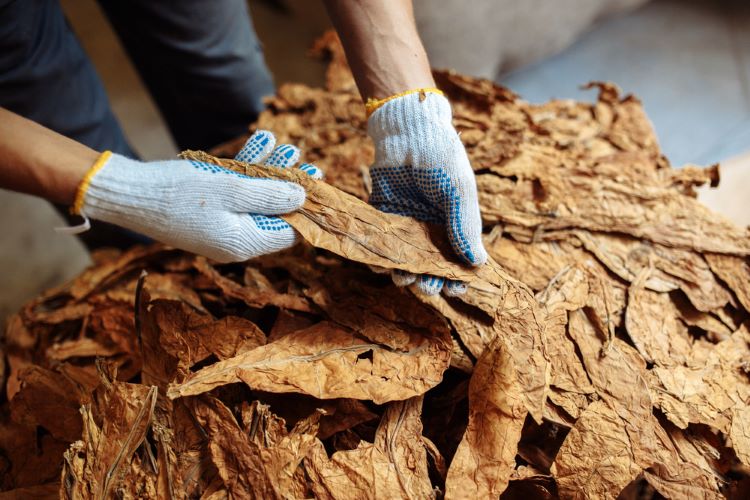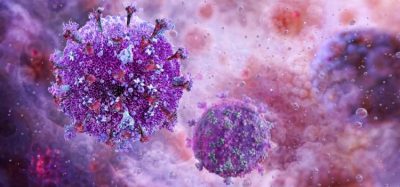New quality requirements for tobacco products
Posted: 8 June 2023 | Dave Elder | No comments yet
Here, Dave Elder explores proposals for new FDA rules on tobacco product manufacturing. How could strategies for controlling tobacco-specific nitrosamines compare with those for nitrosamine drug substance-related impurities?


The harmful effects of smoking are well known, causing more avoidable deaths than any other single cause.1 In the EU, the Tobacco Products Directive (2014/40/EU) governs “the manufacture, presentation and sale of tobacco and related products”.2 The US Food and Drug Administration (FDA) has recently announced that it will control the quality of tobacco products, particularly e-cigarettes, more closely, to prevent avoidable contamination and help address “inconsistencies between product labelling and actual concentrations” in these products, potentially misleading customers.3
The US FDA has recently announced that it will control the quality of tobacco products…more closely, to prevent avoidable contamination”
The new FDA rules will ensure that both finished and bulk tobacco products are manufactured according to established specifications; require manufacturers to take appropriate measures to prevent contamination; require investigation and identification of products that do not meet specifications and institute appropriate corrective actions, such as a recall. They will also ensure the capability to trace all components or parts, ingredients, additives and materials, as well as each batch of finished or bulk tobacco product, to aid the investigations of those that do not meet specifications.3
A recent article4 on the quality of e-cigarettes highlighted the issue, based on the analysis of 32 vaping products from seven different countries. Only one-third of products had accurate levels of nicotine in the product compared to the label claim; half of the products showed greater than 20 percent difference between measured and claimed nicotine levels. Half of the products showed degradation levels up to five-times the allowable levels in the European Pharmacopoeia monographs for nicotine (no. 1452),5 nicotine salts (no. 2599),6 or nicotine resinate (no. 1792).7
As tobacco is a botanical product, differences in quality can arise due to geographical origin, drying, fermentation and saucing (treating leaves with aqueous extracts of sugars, spices, flavourings, etc).8
Tobacco-specific nitrosamines
An additional cause for concern is that tobacco products are often contaminated with tobacco-specific nitrosamines (TSNAs).9 TSNAs occur naturally in freshly‑harvested, green tobacco leaves; but importantly they increase during curing, storage, fermentation and additional processing, ie, saucing.9 TSNAs are nitrosation by‑products of the endogenous pyridine alkaloids, ie, nicotine, nornicotine and their common breakdown products 4-methyl-1-(3-pyridyl)-1 butanone. The most commonly studied TSNAs are N-nitroso nornicotine (NNN), 4-(methylnitrosamino)-1-(3-pyridyl)-1 butanone (NNK), N-nitroso-anatabine (NAT) and N-nitroso anabasine (NAB). NNN and NNK are class 1 carcinogens and FDA requires tobacco manufacturers to test and report levels of these carcinogens in their products. NAB is weakly carcinogenic, whereas NAT is not carcinogenic and neither are designated as harmful and potentially harmful constituents (HPHCs) in tobacco smoke.9
An additional cause for concern is that tobacco products are often contaminated with tobacco-specific nitrosamines (TSNAs).9″
It will be interesting to see whether FDA tries to control carcinogenic TSNAs in tobacco products using an acceptable intake (AI) strategy, aligned with approaches applied to medicinal products for nitrosamines. The AIs for NNN and NNK are 96.0 and 99.9 ng/day, respectively,10 but typical levels of these two carcinogens in cigarettes are NNN: 0.306-7.4 μg/g tobacco (ie, 306-7400 ng/g tobacco) and NNK: 0.194-3.2 μg/g tobacco (ie, 194‑3200 ng/g tobacco).10 A typical cigarette weighs approximately 1g and a typical smoker will smoke between 10 and 20 cigarettes per day. Thus, a light smoker (≤10 cigarettes/day) will be exposed to 3,060‑74,000 ng/day of NNN and 1,940‑32,000 ng/day for NNK. These levels are 30-740 times the AI for NNN and 19-320 times the AI for NNK. In contrast, FDA and other agencies controlled N-nitrosovarenicline to levels of 37 ng/day in the smoking cessation products, eg, Chantix (varenicline). This resulted in certain manufacturers exiting the market.11
About the authour
Dave Elder, PhD


References
- Smoking, Drinking and Drug Use among Young People in England, 2021. [Internet] NHS Digital. 01 February 2023. [Cited 2022Mar]. Available from: https://digital.nhs.uk/data-and-information/publications/statistical/smoking-drinking-and-drug-use-among-young-people-in-england/2021/part-1-smoking-prevalence-and-consumption.
- DIRECTIVE 2014/40/EU OF THE EUROPEAN PARLIAMENT AND OF THE COUNCIL of 3 April 2014 on the approximation of the laws, regulations and administrative provisions of the Member States concerning the manufacture, presentation and sale of tobacco and related products and repealing Directive 2001/37/EC. [Internet] OJEU. 2014. [Cited 2022Mar]. Available from: https://eur-lex.europa.eu/legal-content/EN/TXT/PDF/?uri=CELEX:32014L0040.
- FDA Proposes New Requirements for Tobacco Product Manufacturing Practices. 2023. [Internet] FDA. [Cited 2022Mar]. Available from: https://www.fda.gov/news-events/press-announcements/fda-proposes-new-requirements-tobacco-product-manufacturing-practices#:~:text=These%20proposed%20requirements%20would%20help,risks%20by%20ensuring%20product%20consistency.
- Bennani I, Alami Chentoufi M, El Karnbane M, et al. E-cigarette quality control: Impurity and nicotine level analysis in electronic cigarette refill liquids. The Sci World J. 2020; 2020: 1–7.
- European Pharmacopoeia monographs for nicotine (no. 1452).
- European Pharmacopoeia monographs for nicotine Ditartrate Dihydrate (no. 2599).
- European Pharmacopoeia monographs for nicotine resinate (no. 1792).
- Edwards SH, Rossiter LM, Taylor KM, et al. Tobacco-specific nitrosamines in the Tobacco and Mainstream Smoke of U.S. Commercial Cigarettes. Chem Res Toxicol. 2017; 30(2): 540-551.
- Hecht SS. Biochemistry, biology, and carcinogenicity of tobacco-specific nitrosamines. Chem Res Toxicol. 1998; 11: 559-603.
- Assessment report Procedure under Article 5(3) of Regulation EC (No) 726/2004 Nitrosamine impurities in human medicinal products Procedure number: EMEA/H/A-5(3)/1490 EMA/369136/2020 Committee for Medicinal Products for Human Use (CHMP). 2020. [Internet] EMA. [Cited 2023Mar]. Available from: https://www.ema.europa.eu/en/documents/referral/nitrosamines-emea-h-a53-1490-assessment-report_en.pdf.
- FDA Updates and Press Announcements on Nitrosamine in Varenicline (Chantix). 2022. [Internet] FDA. [Cited 2023Mar]. Available from: https://www.fda.gov/drugs/drug-safety-and-availability/fda-updates-and-press-announcements-nitrosamine-varenicline-chantix.
Issue
Related topics
Impurities, Manufacturing, Regulation & Legislation, Research & Development (R&D)









